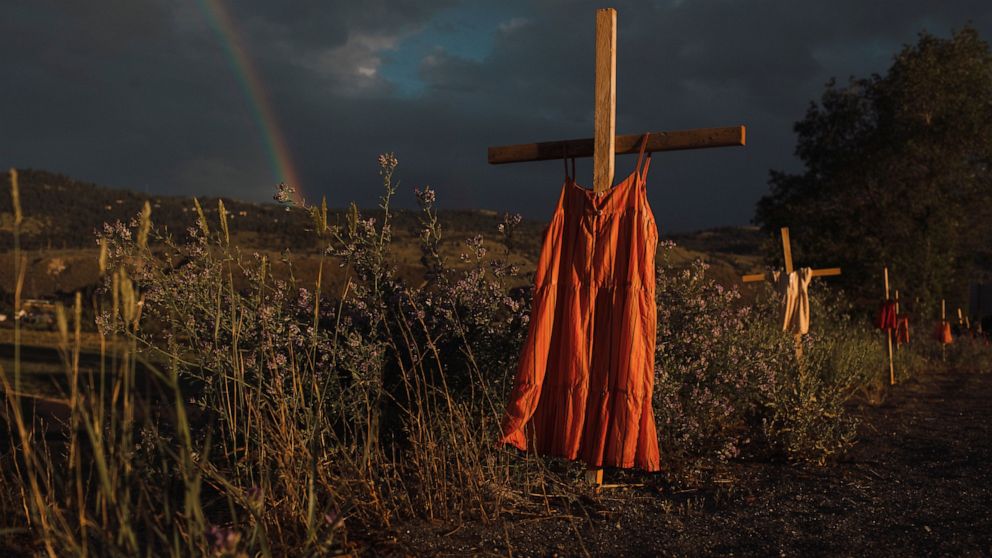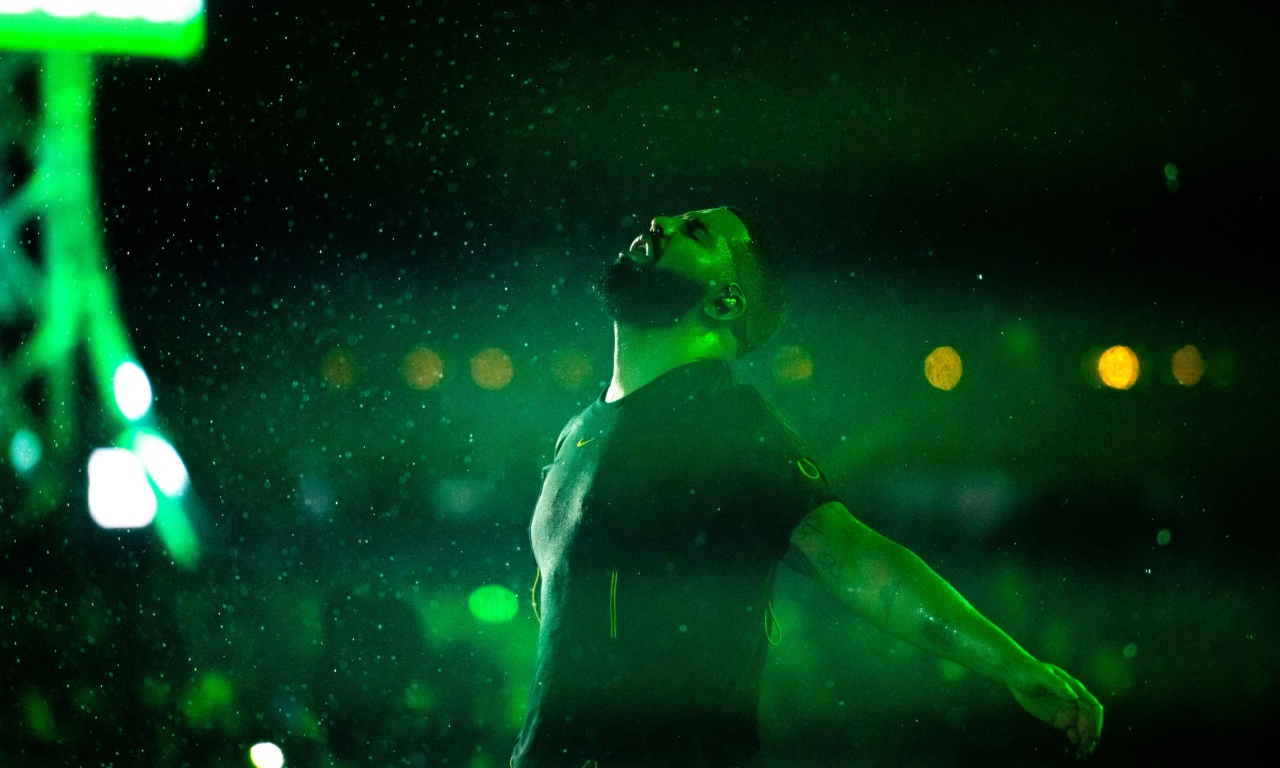A haunting image of a red dress hanging on a cross along a roadside, with a rainbow in the background, commemorating the children who died in a residential school created to assimilate Indigenous children in Canada has won the prestigious World Press Photo award.
THE HAGUE, The Netherlands — An image of a red dress hanging from a cross along a roadside, with a rainbow in the background, commemorating the children who died in a residential school created to assimilate Indigenous children in Canada won the prestigious World Press Photo award, Thursday.
The image is one in a series of Kamloops Residential School taken by Canadian photographer Amber Bracken for The New York Times.
“This is the kind of image that burns itself into your memory. It inspired a kind of sensory reaction,” Global Jury Chair Rena Effendi said in a statement. “I can almost hear the silence in this photo, a moment of silence of global reckoning for colonial history, not only in Canada but around the world. .”
It was not the first acknowledgment of Bracken’s work at the Amsterdam-based competition. He won first prize in the Contemporary Issues category in 2017 for pictures of protesters on the Dakota Access Pipeline in North Dakota.
His latest victory came less than a week after Pope Francis made a historic apology to indigenous peoples for the “pathetic” abuses they suffered in Canadian Catholic-run residential schools and begged for forgiveness.
Last May, Tk’emlups te Secwepemc Nation announced the discovery of 215 graves near Kamloops, British Columbia. It was Canada’s largest Indigenous housing school and the discovery of the grave was the first of many similar grim sites across the country.
“So we’re starting to have, I think, the personification of some of the kids who go to this school who don’t come home,” Bracken said in comments issued by contest organizers. “There is also a small cross on the edge of this highway. And I knew right away that I wanted to photograph this line of the cross with the little children’s clothes hanging on it to commemorate and honor those children and to make them look in a way they haven’t in a long time. ”
Indigenous peoples elsewhere in the world are featured in the other two annual competition grand prizes. The winners were selected from 64,823 photos and open format entries by 4,066 photographers from 130 countries.
“Together, the global winners are grateful for the past, while living in the present and looking to the future,” said Effendi.
Australian photographer Matthew Abbott won the Photo Story of the Year prize for a series of images for National Geographic/Panos Pictures documenting how the Nawarddeken people of West Arnhem Land in northern Australia fought fire with fire deliberately setting bushes to remove fuel that could sparked much larger forest fires.
The Long-Term Project Award went to Lalo de Almeida from Brazil for a series of photos for Folha de São Paulo/Panos Pictures entitled “Amazonian Dystopia” which mapped the effects of exploitation of the Amazon region, particularly on Indigenous communities forced to deal with environmental degradation.
In the previously announced regional awards, Bram Janssen of The Associated Press won the Stories in Asia category with a series of photos from Kabul cinema and AP photographer Dar Yasin was honored for photos from Kashmir entitled “Endless War.”
Yasin, along with Mukhtar Khan and Channi Anand, won the 2020 Pulitzer Prize in feature photography for their coverage of the war in Kashmir.

“Coffee aficionado nerd. Troublemaker. General communicator. Gamer. Analyst. Creator. Total brew ninja.”





:strip_icc()/s.glbimg.com/jo/g1/f/original/2012/04/08/skrillex-7.jpg)

